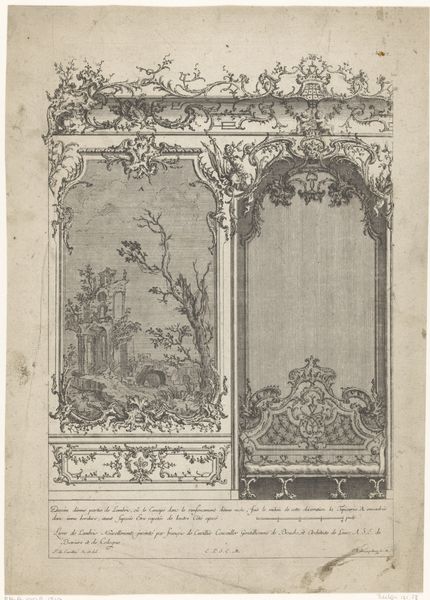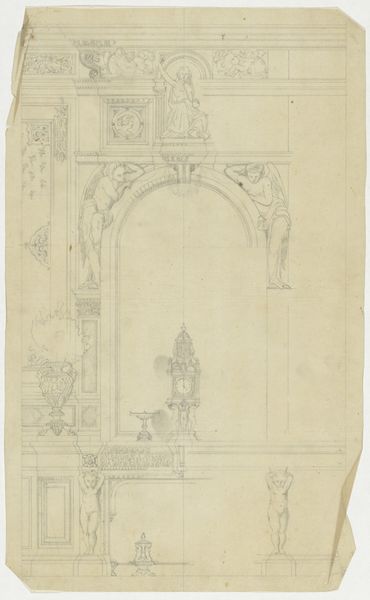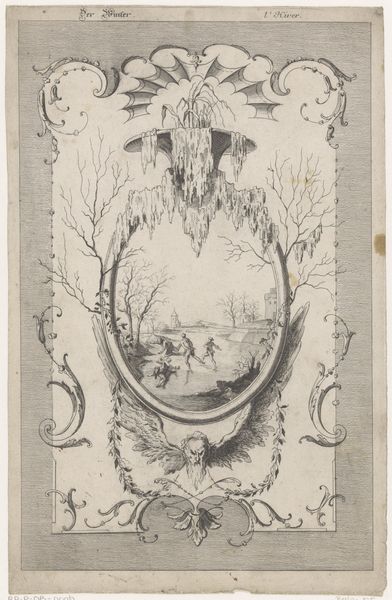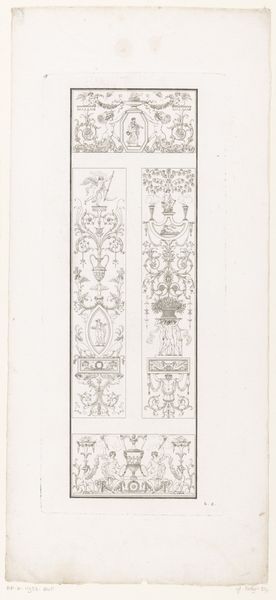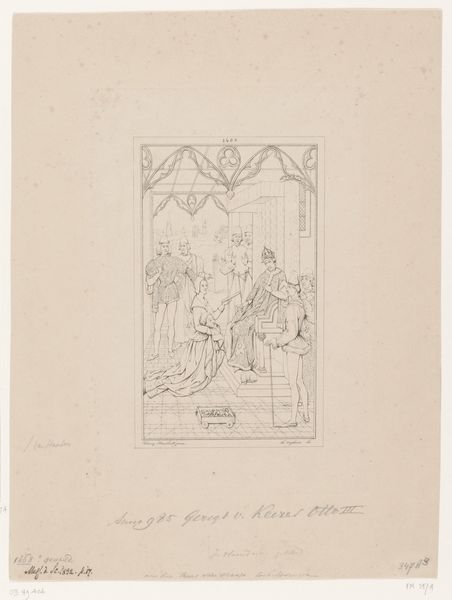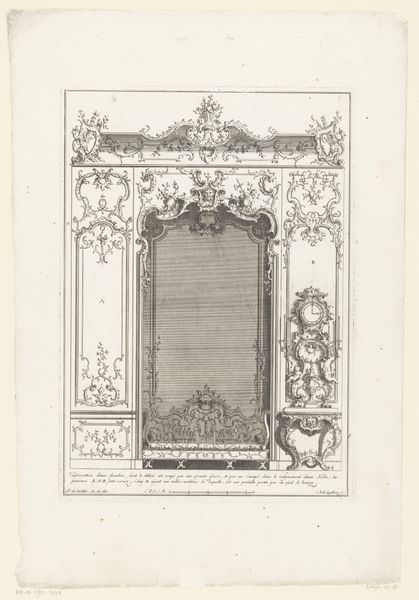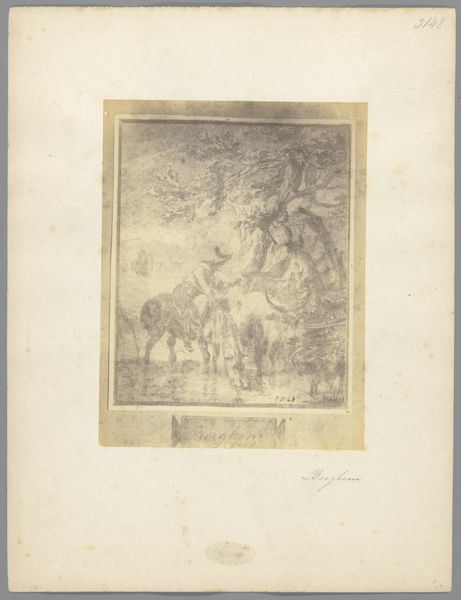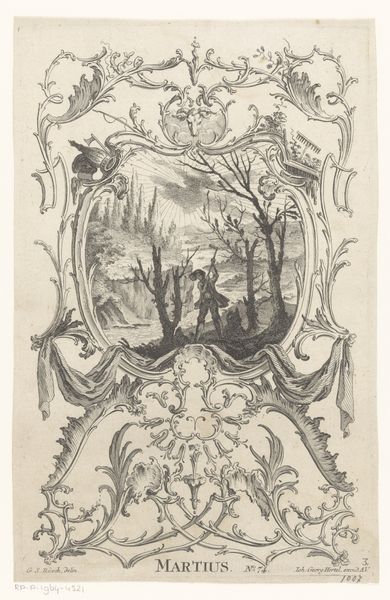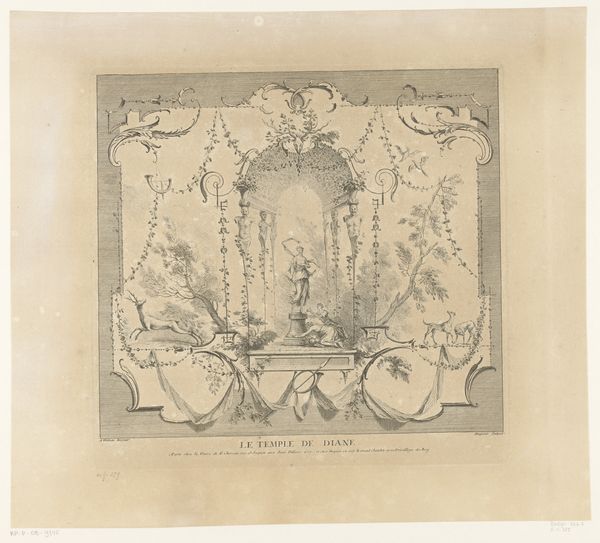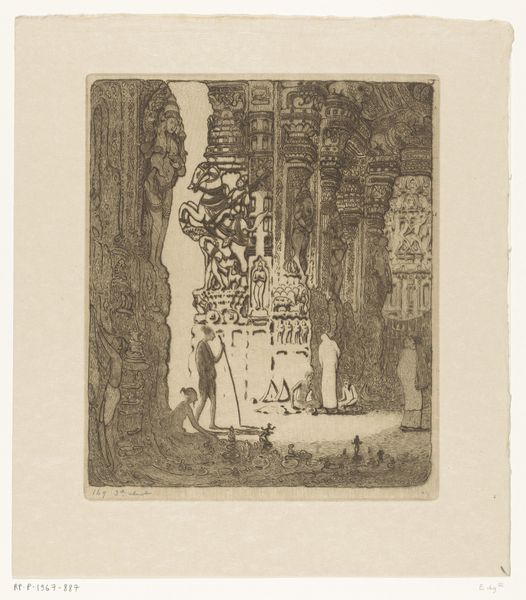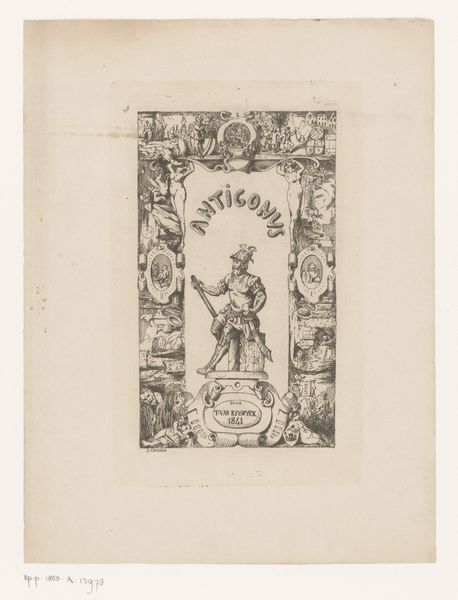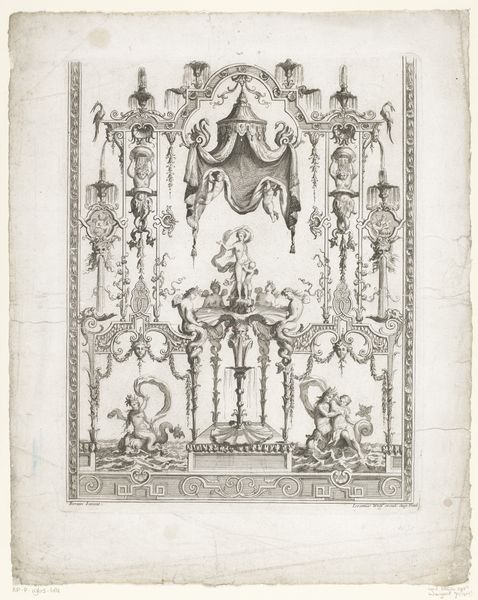
drawing, paper, pencil
#
drawing
#
narrative-art
#
paper
#
pencil
Dimensions: 221 mm (width) x 179 mm (height) (bladmaal)
Curator: Here we have a pencil drawing on paper from 1877, a preliminary illustration titled "Udkast til illustration til "Ude og hjemme," by Frans Schwartz. It’s currently part of the collection at the SMK, the National Gallery of Denmark. Editor: My first impression is one of intimate storytelling, like peering into a childhood dream. The central gnome-like figure feels particularly potent and captivating; there is such serenity. Curator: It’s fascinating to see these glimpses into popular magazines. "Ude og Hjemme" was one of Denmark’s major illustrated magazines and played a large role in shaping ideas about Danish identity at home and abroad through illustration. This was during a period of rapid urbanization and modernization in Denmark. These depictions, like the nativity scenes depicted, offered familiar cultural territory that reaffirmed family and traditions. Editor: Absolutely, the iconography in this sketch creates a powerful juxtaposition. On one hand, we have the traditional imagery of the nativity, evoking notions of faith, family, and hope and, on the other, the pixie at the forefront, holding a toy or tool and a sleepy puppy. There's an undeniable sense of nostalgia but it hints at something older... deeper rooted perhaps, or what about how folk tales are co-opted in this family and domestic picture, this idea of being home. Curator: And there's a tension to be understood as we consider the time in which this drawing was produced. The period following the loss of territory in 1864 to Prussia had spurred intense debates about Danish identity, national belonging and art and culture became spaces of reimagining belonging to this cultural shift. A commercial piece is not necessarily devoid of this sentiment. Editor: Exactly, there is such potency here, isn't there? The images play so beautifully with cultural memory, as these domestic depictions speak volumes about both personal and shared ideals and sentiments, the emotional baggage and hopes people carry from one generation to the next. It suggests that familiar archetypes continue to function as an anchor. Curator: Reflecting on Schwartz's illustrations really highlights the function of magazines at that moment in constructing and shaping perceptions of modern Danish society. Editor: It does make you wonder how deeply ingrained images become and what purposes they serve in reinforcing particular mythologies of homeland.
Comments
No comments
Be the first to comment and join the conversation on the ultimate creative platform.
